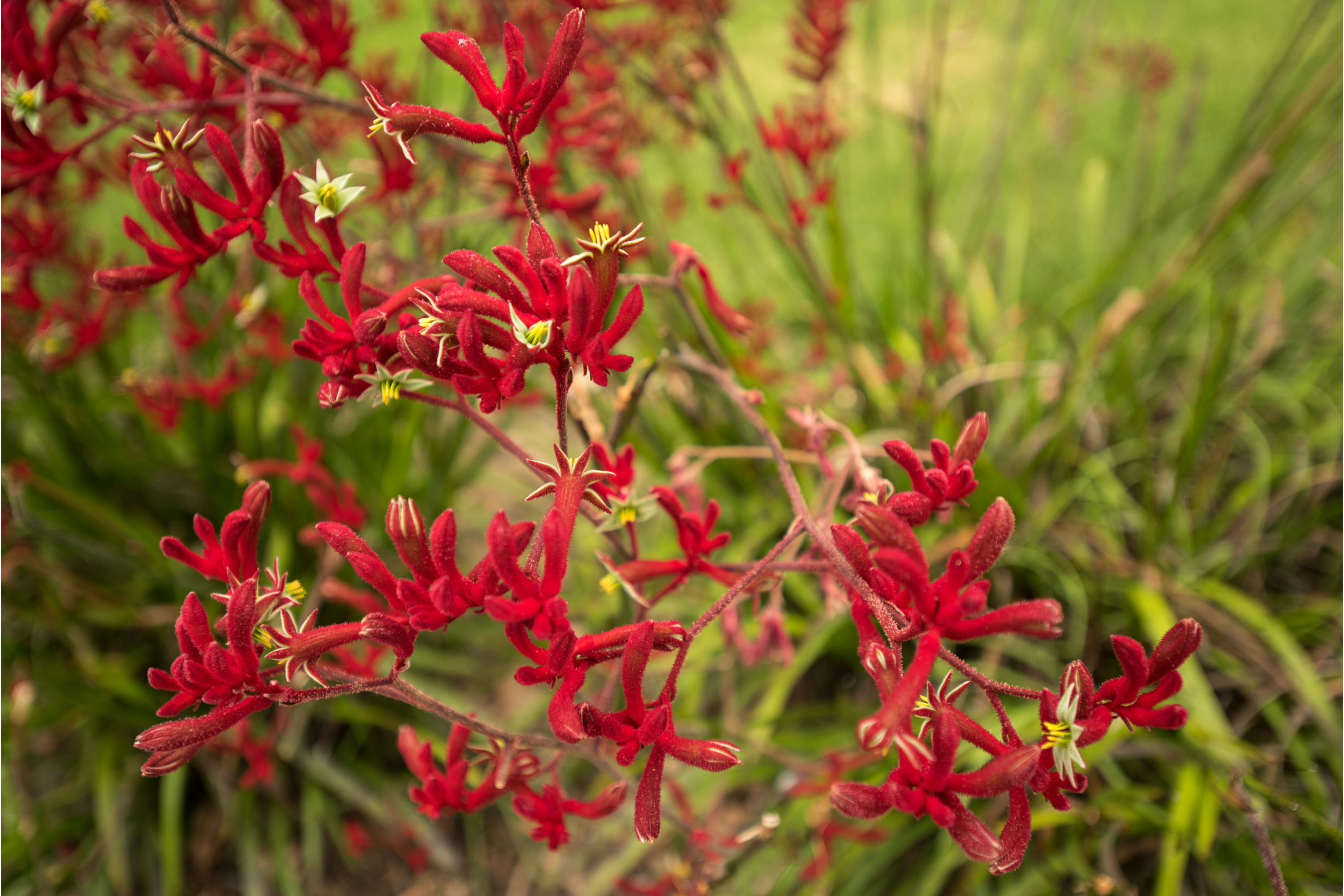Red kangaroo paw
(Anigozanthos rufus)

Description
Anigozanthos rufus is a grass-like evergreen perennial plant native to the southern coasts of Western Australia. Common names include red kangaroo paw, crimson kangaroo paw, and backdraft. The red kangaroo paw grows to a height of 0.2 to 1 m (7.9 in to 3 ft 3.4 in).The grass-like plant has green and grey flat, strappy leaves that are 17 to 28 cm (6.7 to 11.0 in) long. It produces long red to purple to yellow coloured flowers in spring and early summer from August to January. The tubular flowers have a velvety texture and form dense heads at the end. The species was first formally described by the botanist Jacques Labillardière in 1800 as part of the work Relation du Voyage à la Recherche de la Perouse. Synonyms include Schwaegrichenia rufa, Agonizanthos rufa and Anigozanthos tyrianthinus. The plant is often situated in seasonally wet areas growing in sandy soils along the south coast from around Albany in the west to around Cape Arid in the east. Anigozanthos is a genus of Southwest Australian plants of the bloodwort family Haemodoraceae. The 11 species and their subspecies are commonly known as kangaroo paw or catspaw, depending on their size, and the shape and color of their flowers. A further species, previously identified as Anigozanthos fuliginosus (black kangaroo paw), was separated to a monotypic genus as Macropidia fuliginosa. The species are recognised by their unusual flowers, numerous hybrids have been developed for cultivation and floristry. The red-and-green kangaroo paw is the floral emblem of Western Australia. These perennials are endemic to dry sandy, siliceous areas of southwest Australia, but they occur as well in a variety of other environments and soil types. They are grown commercially in Australia, the United States, Japan and Israel. The plant grows from short, underground, horizontal rhizomes. The length and the character of these may vary between the species: some are fleshy, others are fragile. The sap in the root system allows the plants to survive extreme dry spells. In summer, a number of species die back to the rhizome, growing back in autumn. The plants have a basal rosette of long green to greyish-green leaves. The leaves of some species are hairy. From the heart of this roset merge long leafless stalks, which can reach 2 m, ending in a raceme of flowers.
Taxonomic tree:







